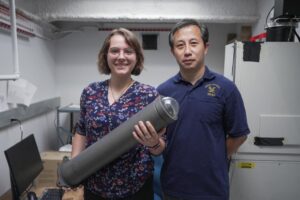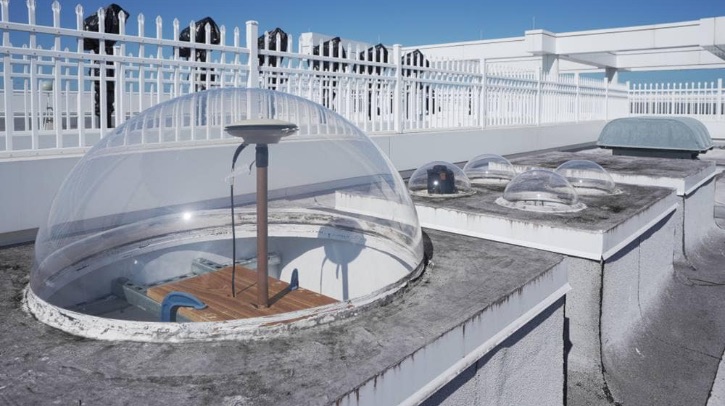The National Science Foundation (NSF) has awarded a US$1m grant to Embry‑Riddle Aeronautical University’s Dr Alan Liu to expand a meteor radar network named Chilean Observation Network De Meteor Radars (CONDOR) in Chile, enabling the network to provide continuous measurements of three-dimensional wind structure roughly 70-110km above Earth. The expansion will also provide mapping of atmospheric waves from multiple angles at multiple altitudes in the liminal region between Earth’s atmosphere and space.
Chilean Observation Network De Meteor Radars
Liu, a professor in the Department of Physical Sciences, was awarded a previous NSF grant in 2019 that supported the deployment of the CONDOR meteor radar network with the transmitter at the Andes Lidar Observatory in Cerro Pachón, Chile, and three receivers at separate sites. The new grant will support the addition of two more receiver sites in Argentina, as well as seven all-sky cameras and a Fabry-Perot Interferometer that provide maps of atmospheric wave motion at multiple altitudes, as well as atmospheric winds, at even higher altitudes (of 200-300km). Collaborating on the project will be the University of Illinois Urbana-Champaign and SRI, an independent non-profit research institution.
“The combination of all of these measurements will give an extremely detailed three-dimensional picture of atmospheric waves that is not yet available anywhere else,” said Liu. “Multiple imagers from multiple sites can be used to reconstruct the three-dimensional atmospheric wave field through complex mathematical algorithms.”
Such information is used to improve models of global circulation, space weather prediction and global satellite navigation systems. The observatory’s location enable Liu and his team to gather measurements in a region known to generate atmospheric waves because of the high mountains of the Andes and strong convections in the Amazonian rainforest.
Mapping of atmospheric waves

“The expanded capabilities of the Andes Lidar Observatory will open a new window of information on the rate at which meteors enter the Earth’s atmosphere and the physics of the uppermost atmosphere,” said Dr Terry Oswalt, associate dean of the College of Arts & Sciences and professor of physics and astronomy. “Only cutting-edge research wins such recognition from the NSF. We are fortunate to have faculty like Dr Liu.”
A postdoc researcher and one or two PhD students will work on Liu’s current grant project at Embry‑Riddle, and each will gain experience, he said. PhD student Adriana Feener was chosen at the beginning of the autumn 2024 semester to participate as one of the researchers on the project.
“PhD students will have hands-on experience in building the instruments and will have opportunities to travel to Chile to participate in the installation and testing. They will then be responsible for monitoring the instruments’ operation and will use the data to develop their research project that will lead to their PhD dissertations,” Liu said. “They will be trained in both engineering and scientific research skills through this project, which will be valuable for their careers.”
In related news, NSF NCAR recently ran simulations on the Cheyenne supercomputer at the NCAR-Wyoming Supercomputing Center to tease out the influence of Kelvin waves – the large-scale atmospheric waves that can extend more than 1,000 miles in the atmosphere and shape global weather patterns – and anticipate clusters of hurricanes days to weeks in advance. Click here to read the full story.



